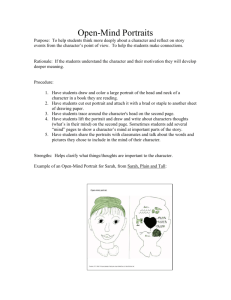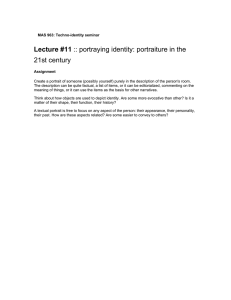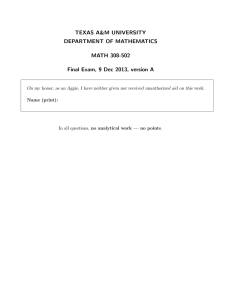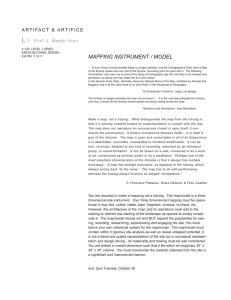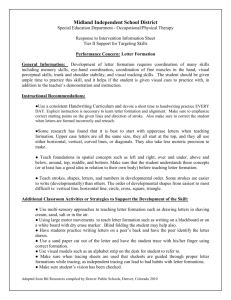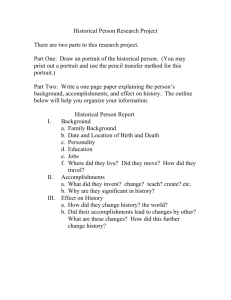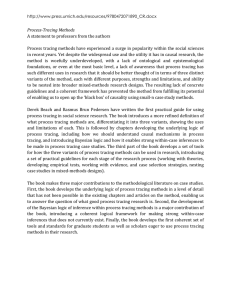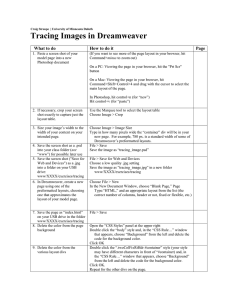ART MAJOR 1: CUT PAPER PORTRAITS NAME: ____________ LESSON FOCUS:
advertisement
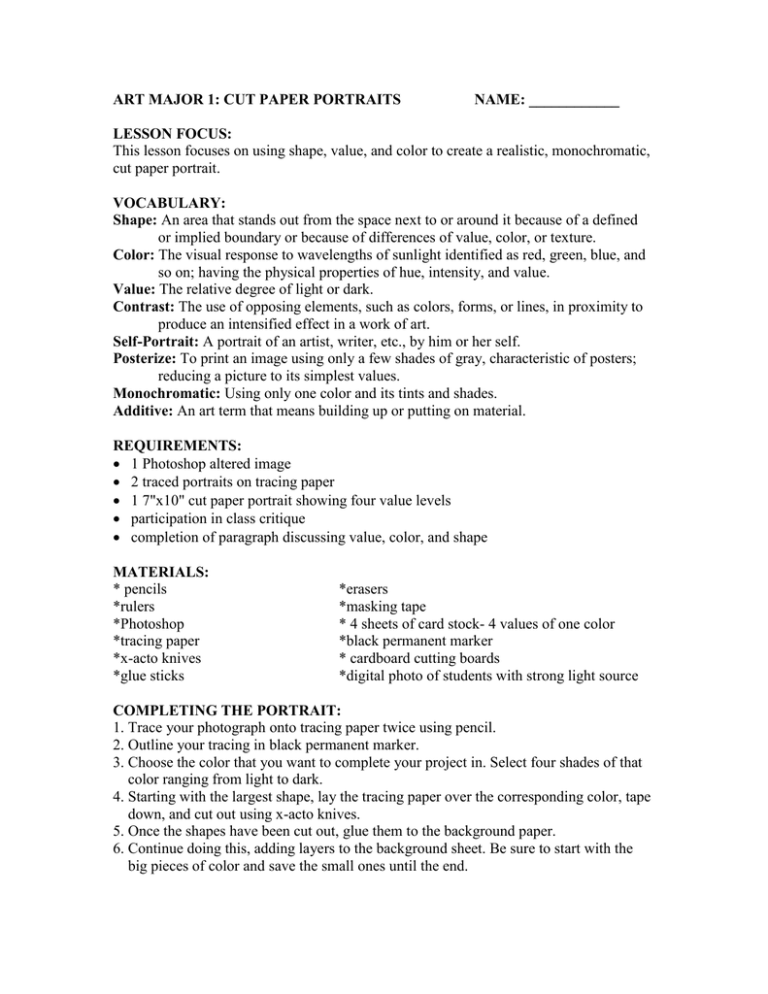
ART MAJOR 1: CUT PAPER PORTRAITS NAME: ____________ LESSON FOCUS: This lesson focuses on using shape, value, and color to create a realistic, monochromatic, cut paper portrait. VOCABULARY: Shape: An area that stands out from the space next to or around it because of a defined or implied boundary or because of differences of value, color, or texture. Color: The visual response to wavelengths of sunlight identified as red, green, blue, and so on; having the physical properties of hue, intensity, and value. Value: The relative degree of light or dark. Contrast: The use of opposing elements, such as colors, forms, or lines, in proximity to produce an intensified effect in a work of art. Self-Portrait: A portrait of an artist, writer, etc., by him or her self. Posterize: To print an image using only a few shades of gray, characteristic of posters; reducing a picture to its simplest values. Monochromatic: Using only one color and its tints and shades. Additive: An art term that means building up or putting on material. REQUIREMENTS: 1 Photoshop altered image 2 traced portraits on tracing paper 1 7"x10" cut paper portrait showing four value levels participation in class critique completion of paragraph discussing value, color, and shape MATERIALS: * pencils *rulers *Photoshop *tracing paper *x-acto knives *glue sticks *erasers *masking tape * 4 sheets of card stock- 4 values of one color *black permanent marker * cardboard cutting boards *digital photo of students with strong light source COMPLETING THE PORTRAIT: 1. Trace your photograph onto tracing paper twice using pencil. 2. Outline your tracing in black permanent marker. 3. Choose the color that you want to complete your project in. Select four shades of that color ranging from light to dark. 4. Starting with the largest shape, lay the tracing paper over the corresponding color, tape down, and cut out using x-acto knives. 5. Once the shapes have been cut out, glue them to the background paper. 6. Continue doing this, adding layers to the background sheet. Be sure to start with the big pieces of color and save the small ones until the end.
